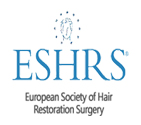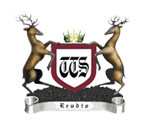- Mon-Sat | 8:00-18:00 Sunday (closed)
- Email : info@harleybodyclinic.co.uk
- Call : 02071679386
With life events such as massive weight reduction and/or the natural process of aging and loss of skin elasticity, can cause even perky and well contoured breasts to droop over and lose its firmness and volume, developing pendulous breasts or breast ptosis. Many women wish to restore the former volume and contour of their breasts, and can benefit from the cosmetic breast uplift surgery.
A Breast Uplift surgery or Mastopexy surgery is exclusively devised for women who are basically satisfied with their breast projection, but wish to restore former firmness that they have lost over time. The surgery aims to achieve the desired results by removing sagging tissue and excess fat from the breasts; tightening skin elasticity and reposition nipple-areola complex.
Ptosis technically refers to drooping and sagging of skin, and sometimes muscles. It is usually a natural occurrence. In case of breast ptosis, it is most likely to be occurring with aging and basically how the body is biologically designed. Sometimes, either lacking or even over-exaggeration of adequate physical movement and exercise can cause droopiness.
Contrary to popular belief, the association of child birth and breast feeding causing the loss of breast volume or droopiness is not as much accepted medically to be true. As we have professionally met many women at our clinic, who did not have child birth and breast feeding, yet had the same issues with breast ptosis which they wished to repair.
The possibilities of breast uplift surgery vary patient to patient, with the difference of breast projection, including the size and mound of the breast; the extent of the ptosis; skin texture and anatomy of the breast. The planning and management of the surgery is based on the evaluation of patient. In general, women whose breasts are neither too big nor too small are excellent candidates.
Grade I and II are mild to moderate breast ptosis, wherein the desired uplifting can be achieved with a short scar breast lift procedure. That involves shorter incisions for periareolar skin resection to reduce the necessary breast tissues and alter the nipple-areola complex. The resulting scar circling the areola is virtually undetectable.
Grade III breast ptosis is classified for greater loss of skin elasticity and sagging connective tissues is usually irreparable with a short scar incision and requires larger extend of tissue and fat removal, for which the general or traditional techniques of T-Incision breast uplift is more applicable to achieve desired firmness.
As with Grade III or sometimes with advanced Grade II breast ptosis, more than half of the skin folds droops over requiring a larger amount of skin resection often ends up decreasing the total the size of the breast to achieve firmness. In this case breast augmentation using prosthesis silicone based breast implants can ideally compensate the fullness.
Candidates should have a realistic approach towards their desires and as to why they are opting for this surgery, and not see the surgery as a way of physical transformation, or to please anyone else other than themselves. We encourage seeking patients to thoroughly research about the procedure, and make up their minds with a conservative expectations from the alteration they ask for.
The breast uplift surgery conservatively aims reduce skin and fat to raise the height of the breast with least virtual scarring. With the difference of patient conditions as the breast uplifting techniques vary a little and so does the scar placement. The short scar circling the areola (periareolar incision) is made in all techniques, added to it, an Inverted T Incision or a Vertical Incision shall be made. The length of these scars depends on the size of the breast mound.
The breast uplift surgery conservatively aims reduce skin and fat to raise the height of the breast with least virtual scarring. With the difference of patient conditions as the breast uplifting techniques vary a little and so does the scar placement. The short scar circling the areola (periareolar incision) is made in all techniques, added to it, an Inverted T Incision or a Vertical Incision shall be made. The length of these scars depends on the size of the breast mound.
This technique is ideal for mild to moderate, Grade I and II breast ptosis condition. Following a periareolar incision a vertical incision is made till the breast fold but without taking the incision line further horizontally. The areola is positioned at a higher level and the skin flap closed and sutured.
The incision is made around the areola alone, and leaves very less scarring; and is ideal for repairing pronounced sagginess.
This technique is ideal for very mild ptosis, and is usually performed as a combination procedure with breast augmentation. The crescent shaped incision is made on the upper half of the areola to remove the sagging skin and sutured thus lifting the height of the areola.
The scar-less technique does not really mean that there won’t be any incisions; however this technique promoted the incisions to be so well hidden that it actually seems to be a scar-less procedure. This technique is excellent repairing breast volume rather than actual droopiness. The incisions are made following the natural creases of Incisions following the natural folds of the breasts to repair the nipple-areola complex. If the sagginess is more than mild, then the results might not be as scarless as it would require larger incisions and deeper, more prominent sutures.
The scar-less technique can be considered ideal to be combined with breast implantation, breast reduction and liposuction.


